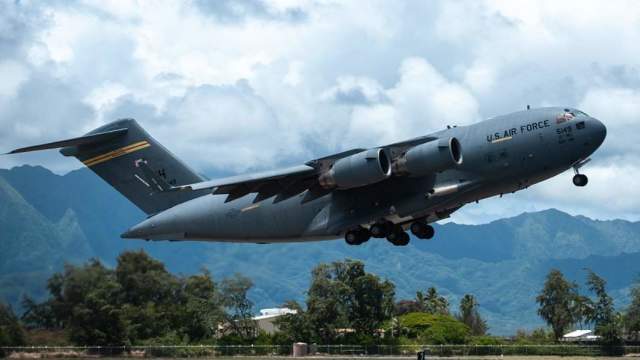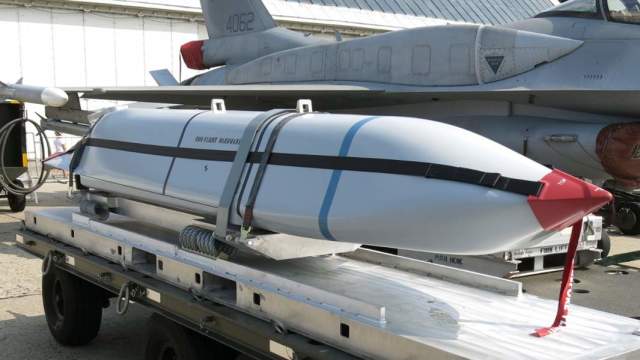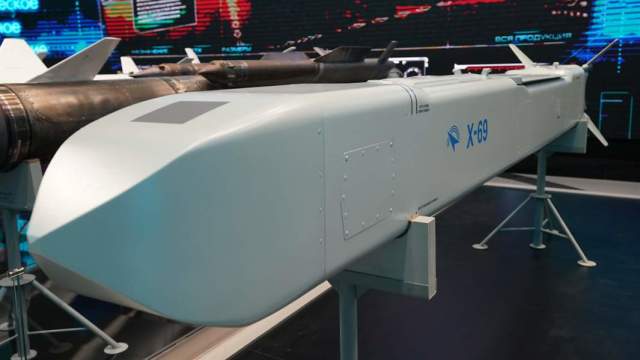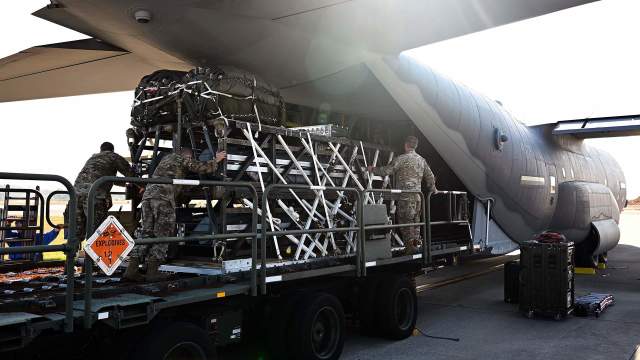The US military has tested a new system of covert application of massive missile strikes near the shores of RussiaIn early November of this year, over the Norwegian Sea, US special operations forces defiantly tested the latest American Rapid Dragon missile system ("Fast Dragon").
It is designed to launch AGM-158 JASSM cruise missiles at ground targets from conventional C-17 Globemaster III or C-130J Hercules military transport aircraft. Izvestia investigated what such a complex is capable of and whether Russia has the ability to respond to this project.
The Winged Werewolf
The United States managed to successfully test for the first time an air–to-ground missile system with high-precision cruise missiles, which can be used literally from any military transport aircraft equipped for the landing of universal containers. Moreover, it was developed in just 24 months: from December 2019 to December 2021. By order of the US military, it was created by Lockheed Martin with the direct participation of the US Air Force Research Laboratory AFRL (Air Force Research Laboratory).
How does it work? Cruise missiles are loaded into a special container — four, six or nine units in one at once. It is equipped with a parachute and simple electronics. Containers are loaded into a transport plane, which is sent to the borders of a potential enemy. When entering the launch line, ammunition receives a signal to turn on its "smart" filling and automatically understands where they are. Thanks to the satellite navigation system, everyone independently determines their coordinates and begins to track their changes.

C-17 Globemaster III Military Transport aircraft
Image Source: Photo: Commons.wikimedia.org/Staff Sgt. John Linzmeier
Next, the coordinates and target data are entered into the missile guidance systems. The plane opens its landing ramp and drops containers with missiles. A parachute opens at each container. Then the most important thing begins — the missiles in turn "fall out" of the container. After a few moments of vertical fall, their wings open, the rocket starts the engine and goes into horizontal flight to the intended target.
It is stated that one medium-class C-130 transport aircraft can deliver 20 missiles, and a more cargo—carrying C-17 - 60-70 pieces. Until the moment of launch, it will not differ in any way from a conventional transport vehicle. What can 60 JASSM stealth missiles do? They are enough to break through even a strong air defense system and hit 20-30 targets.
What is a JASSM-type cruise missile? In the basic version of the AGM-158A with a mass of about 1000 kg, a rocket with a conventional non-nuclear warhead can fly up to 370 km. The Rapid Dragon system uses a more modern modification of the AGM-158B JASSM-ER with a range of already 1000 km.
In a couple of years, it is planned to complete testing of a new model — JASSM-XR (Extra Range). With increased dimensions and weight, it will be able to hit targets at a range of up to 1900 km.

AGM-158 JASSM Cruise Missile
Image Source: Photo: Commons.wikimedia.org/Boevaya mashina
The peculiarity of all missiles of the JASSM family is that they are made with maximum observance of the canons of radar invisibility and have a high-precision guidance system. It combines coordinate guidance using an autonomous inertial control system and satellite navigation, as well as an infrared guidance system. This combination, in theory, allows you to track even moving targets.
This is already a fairly massive missile that can be used by almost any strike aircraft: F-16, F-15, F-35, B-1B, as well as strategic bombers B-2 and B-52H. More than 2,000 JASSM missiles of various modifications are at the disposal of the US Air Force. The penetrating JASSM warhead weighing 450 kg allowed these missiles to destroy with one hit the concrete bunkers of the leaders of the Islamic State (a terrorist organization banned in Russia) deep underground. Of course, such characteristics turn the Rapid Dragon system into an extremely dangerous complex of weapons.
Possible need
For a long time, due to its characteristics, JASSM had few competitors abroad. But the Russian X-69 missile introduced a few months ago is essentially an analogue of the American ammunition. It can also be applied massively. The control system certainly allows you to transfer the rocket to a controlled flight state from free fall. There is nothing new here for rocket scientists. It remains only to solve the issue of "containerization", and the fleet of military transport aircraft of the Russian military is also extensive. Therefore, the only question is the expediency of retaliatory measures and the creation of such a complex. There are no technical barriers to this.

High-precision cruise missile X-69
Image source: Photo: IZVESTIA/Pavel Volkov
The domestic creators of missile weapons systems have extensive experience in the development of aviation missile systems with dropping from transport aircraft. In 1970, the development of a project for the placement of compact ballistic missiles for R-27 submarines on specially converted aircraft carriers of the An-22R "Antey" aviation missile system was started. Each such carrier aircraft was supposed to launch four ballistic missiles with megaton thermonuclear charges at a range of up to 2500 km. The project remained on paper, but if there was such a military necessity, there is no doubt that it could be implemented.
In the 1980s, the Makeev State Missile Center in Miass worked on the MARK project to create a complex with the R-29RM intercontinental ballistic missile and the An-124 Ruslan carrier aircraft. Using the developments of this project in the late 1980s – early 1990s, active work was underway on the civil space project "Air Launch". In fact, in the late USSR, the technology of placing compact intercontinental ballistic missiles on transport aircraft with the possibility of targeted use was worked out.
If the USSR has learned to launch sufficiently heavy ballistic missiles from airplanes, then there are no problems implementing such technologies at the current level of development of guidance systems and electronics for actual air-launched cruise missiles. We only need a comprehensive assessment of the need for such a project, a statement of the task and an order.
Dmitry Kornev

